Rachel Whitney, Curator,
Sapulpa Historical Museum
Mary Carmack McDougal was born on August 15, 1891. Mary is one of the daughters of one of Sapulpa’s first mayors, Daniel Archibald McDougal, “In early years [of the 20th] century, the ‘Home Seekers Excursion’ train departed twice a month from the deep South…One of its scheduled stops was Sapulpa, Indian Territory…On a day in June 1904, Myrtle Archer McDougal, and her three young daughters, Jennie Myrtle, Mary, and Violet, disembarked from the passenger car…waiting eagerly for his family was D.A. McDougal.
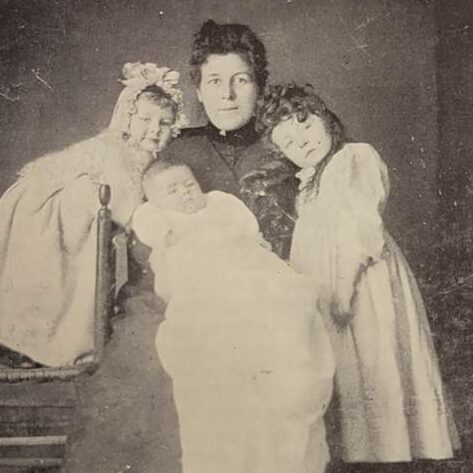
The family coming to Sapulpa, to Indian Territory, would make history.
In 1903, D.A. had journeyed west to Sapulpa, where he hung a wooden sign, “attorney-at-law” in front of a Main Street office. He and his newly-reunited family lived at 217 S Elm St; the residence is long gone, however.
D.A. moved to Sapulpa for an opportunity. D.A. was mayor from 1908 to 1910. He was an attorney and judge for our district. “Attorney McDougal won his case for the Clantons, a Muscogee Creek family who were petitioning to have their name registered on the Creek Tribal rolls in order to be eligible for a share of the Native lands then being distributed. He accepted forty acres of land in lieu of a fee and acting on a ‘hunch’ hired a wild-cat well dug on his new land…he found himself an oil millionaire.”
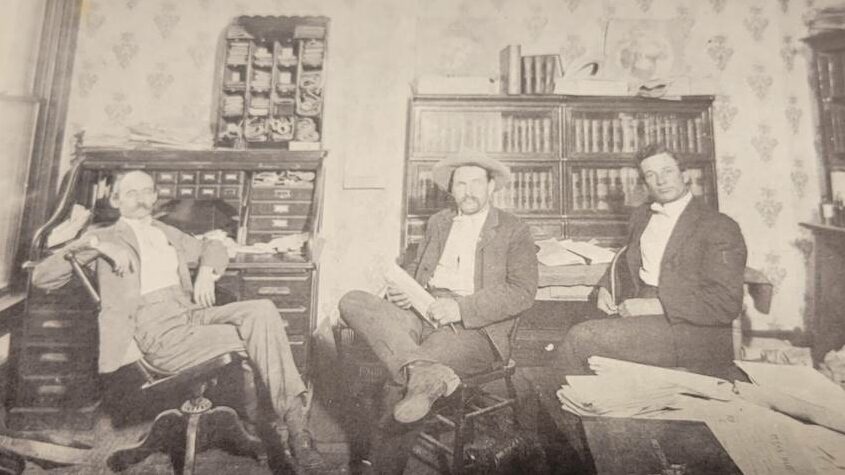
Mary would later write in her book about her father, Thirteenth Child: the Store of D.A. McDougal, “We waited – forever it seemed. I knew I would die if something didn’t happen soon. Then suddenly there was a roaring and the men yelled and scattered in every direction, running for their lives. And there it came out of the pipe at the side – black oil glittering in the slanting sun! Now we had oil, we wouldn’t have to scrimp and do without anymore. Colle! Fudge parties! Midnight feasts! Kodaks and chafing dishes! Kansas City! Colorado, Niagara Falls, maybe! Even New York! And books – all we wanted!”
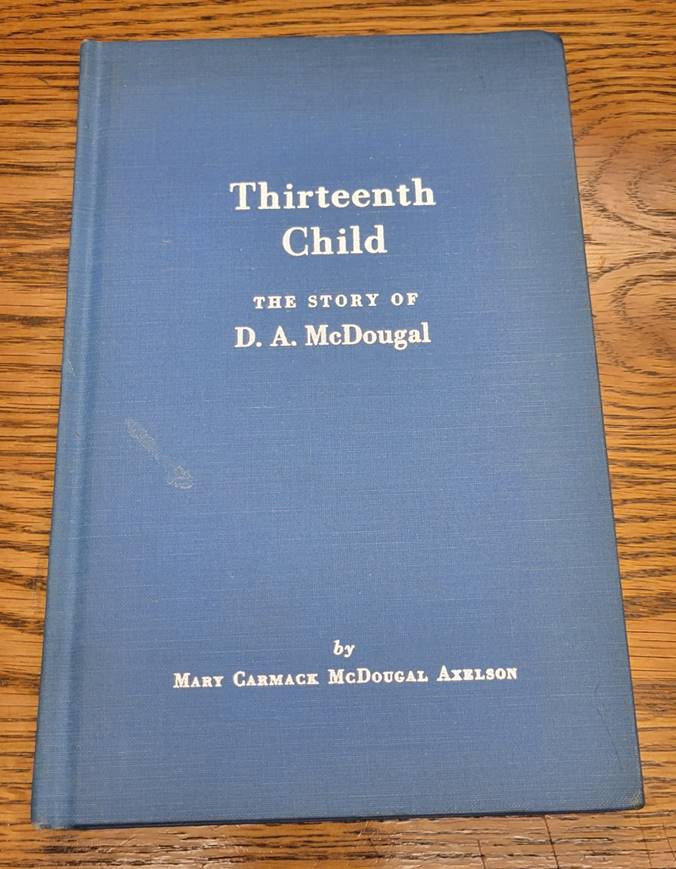

After the money came in, the family moved to what Mary referred to as “the 13-room house in Sapulpa that oil bought.” Mary wrote, “oil bought us one of the largest and most imposing homes in Sapulpa – on nearby South Oak Street…we built on to this house until it soon had thirteen rooms – dad’s lucky number.”
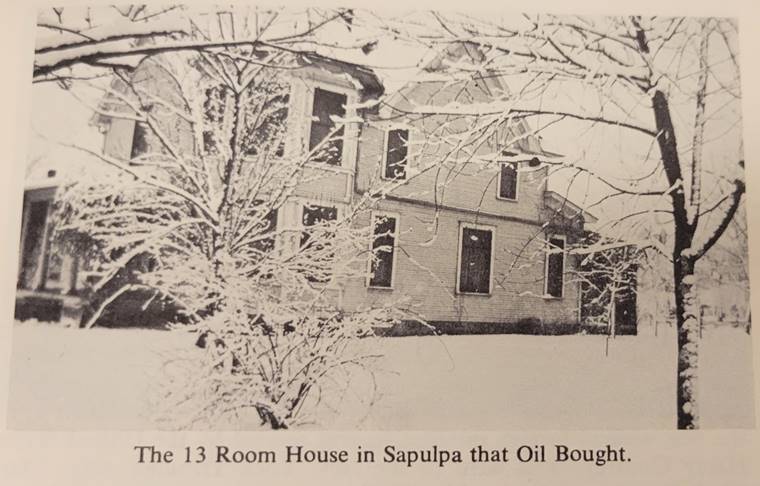
Myrtle McDougal, like her husband, became a leader in the area. She became a pioneer in Indian Territory-turning-Oklahoma statehood. “The national press hailed her as a ‘suffragette and crusading leader and organizer whose work in political, literary, and women’s groups spanned nearly a century’…she was a leading figure in women’s club movement, suffrage, democratic party politics, health reform, and the world peace campaign.” Myrtle McDougal went on to lead or begin over 40 organizations.
“Arch (how Mary referred to her father) and Myrtle enjoyed these house parties with great gusto and were a happy part of the groups that were reading poetry or arguing over some favorite or hated author or some artistic theory here and there over the big house.”
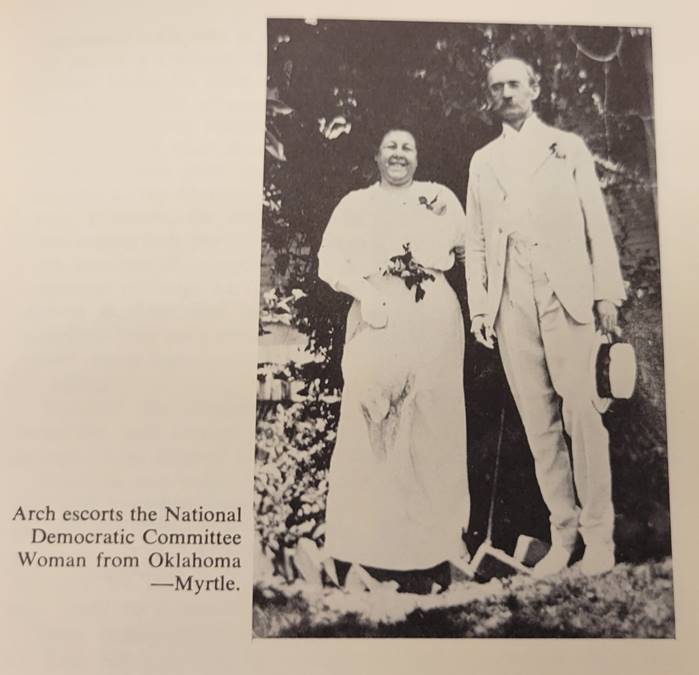
Mary recalled her parents entertaining guests in Sapulpa. “If you come to Sapulpa at all, the McDougals will entertain you one way or another – in their home, or in the McDougal jail (the city had rented one of my father’s buildings for a temporary jail), or in the McDougal cemetery (my father had helped a friend in financing a cemetery).”
It is unsure if Mary graduated or attended Sapulpa schools. One of her sisters, Jennie Myrtle, graduated from Sapulpa High School in 1907. “Oil sent the three McDougal girls to ‘finishing school’ and to university.”
Mary enrolled at the University of Oklahoma in Norman, during the First Great War. With Myrtle and D.A. as parents, Mary and her sisters took an interest in economics, education, writing, women’s rights, and motherhood. At the University, Mary became a member of the Kappa Alpha Theta sorority.
Mary would often stay in Sapulpa and be a part of her community. This week in Sapulpa history, in 1915, “one of the crowning events of the forthcoming Creek County Fair is the Better Babies Contest, which is to be put on and which is being looked after by Mrs. George Weztel, Mrs. Bassett, and Miss Mary McDougal.” It was a competition held in state fairs during the early 20th century, judging for their health.
At the University, Mary began her journey for the love of writing and poetry. She often published articles in Oklahoma; many of these articles could be found in magazines across the country.
In March 1918, Mary’s first nationally recognized break occurred. “Miss Mary Carmack McDougal is now head of the magazine publicity work for the national fuel administration at Washington. Miss McDougal has spent several years attending the University of Oklahoma and was still a student there when appointed magazine publicity head. At the present time she is in Washington and will return to Norman when the war ends. Miss McDougal is the author of several articles which have already appeared in the Century Magazine, World’s Work, the Women’s Home Companion, and the Ladies’ Home Journal.”
With the 1920s just around the corner, Mary McDougal became a recognizable name in Oklahoma. “Mary’s own life evolved from a series of adventures that were in themselves made of the drama that theater relishes.” Frequently, Mary would just as soon visit the big house in Sapulpa, turn around, and then leave for Washington or New York.
With D.A. McDougal’s oil finances, D.A. also purchased acres in Florida. The family also would frequently vacation in Miami. Miami would soon become the headquarters for the McDougal family when they left Oklahoma for raising families and retirement for others.
The McDougal family would often vacation in Colorado, New York, and travel back to their roots in Tennessee. “Mary balanced several careers with originality and skill, becoming in turn, suffragist, author, social reformer, political activist, oil and land broker, and maverick.”
By 1921, the McDougals and Mary were regulars as featured speakers and writers for Oklahoma organizations. Being originally from Tennessee, the McDougals knew about their families’ past of owning enslaved people. With many efforts, the family tracked down two former enslaved people of the family’s plantation. One lived in Tennessee, and the other lived in Indiana; both people had the McDougal last name—a common practice at the time. Mary even wrote in her book, “I knew that the freed slaves took the name of their master.”
D.A. McDougal sought out these two people, bought food and medicine for them, and had a conversation before they died. The McDougals then returned to Oklahoma as the Ku Klux Klan began to rise.
In Mary’s book about her father, Mary writes about the Tulsa Race Massacre. “I was doing a story for an Eastern newspaper on the riots, so Dad and I were in Tulsa the next morning. We had to get a pass from the Governor to go where we wanted to go, for there was martial law in the devastated section and there were still a few instances of Negroes being shot that morning.”
Mary’s book went page after page describing how she and her father aided people from the devastation. One instance, Mary said, “we saw an old black woman there shivering in a flimsy kimona and old wet house slippers, and we offered to drive her to town to get clothes at a relief shop, but she refused to get out of the car and cross the sidewalk unless one of us came with her, she was so afraid of being shot at!” the book read. “I took the woman’s arm and led her into the store, and found her a coat and some strong comfortable looking shoes.”
Mary went on to write about the similar situation in Sapulpa, just a little over a year later. Mary wrote, “it was not long after this terrible butchery of Negroes in Tulsa that the kind of thing happened in Sapulpa…no one knew what was going to happen. The Sapulpa Negroes, with the Tulsa massacre fresh in their minds, were panic-stricken.”
Mary said that they moved their cook to the “big house from the servants’ quarters on our back lawn.” Mary and her family went all over town and county, urging people back to their homes. “My father promised them that they would be protected there. The Negroes trusted this promise and went home and stayed there safely. So decency prevailed; that is something I have always been proud of little Sapulpa for.”
For Mary, the aftermath of these events began an infatuation for caring for others. Including her career in writing, nursing was one of the many careers Mary took on as her passion. “The source of Mary’s story was the autobiographical journal that she kept…In the best tradition of the independent woman of her era, Mary eschewed marriage for a career…There in the center of the reform idealism of the 1910s and 20s, she filled scrapbooks with clippings of her published poetry and records of her activism.”
Mary kept writing and publishing, in New York, Washington, and Oklahoma. By July 1923, “she is now at work on a poem which will be given the position of official state poem, expressive of the individuality of Oklahoma…Miss Mary McDougal is a poet of ability.”
Writing ran in her family’s veins. Violet McDougal, Mary’s sister, too joined her sister in New York. In 1925, Violet and Mary published their poems. The poems were also published in New York Herald-Tribune, University of Oklahoma Magazine, New York Times, Daily Oklahoman, Kansas City Star, Miami Herald, and many others.
Mary continued to devote her time to working and activism. “Hailed in the press as ‘Oklahoma Mary,’ she received notoriety for idiosyncrasies that included such habits as carrying a pistol and doing her automobile repairs, while she earned a reputation for her fiery speaking technique…”
Mary’s work pushed her from coast-to-coast. She also worked hard for the states in the between. “Mary was an organizer and publicist for the New York State Women’s Suffrage Association during the ‘decisive battle’ period and an early volunteer of the Women’s Trade Union League. Always a woman of many enthusiasms, she combined her feminist and political interests by becoming the first woman campaigner in a presidential election, when she was sent in 1916 to organize the women voters of the suffrage state of Kansas for the Democratic Party.”
While in her busy schedule, Mary found time to attend her sister’s and her niece’s wedding. “Lucky it was and happy it was to live in that [Sapulpa] house. Here, standing in front of the long rose velvet curtains that hung in the archway between the living and dining rooms. Jennie Myrtle married Hugh James McKay, oil geologist; Jennie Myrtle saw her own daughter, Myrtle, married to James Hocker, engineer.”
Mary would also marry at the home, too. In 1923, Mary met Ivar Axelson. “I married Ivar, an economist and darling.” Ivar secured a job at University of Oklahoma as a professor of economics. The two moved to Norman and got back to work.
“The subject of parenthood became a strong force in their lives. Although the physicians who examined Mary warned her that 37 was a dangerous age for a first pregnancy, she stubbornly preserved.” In 1928, Mary decided to keep a journal of her pregnancy and motherhood.
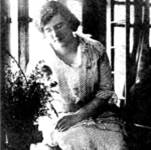
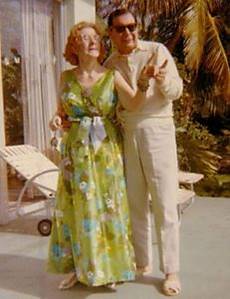
Mary and Ivar Axelson took a risky operation and decided to have a Cesarean operation. On February 12, 1929, a little girl was born in the Axelson family: Mary Ivonne Axelson.
With their new baby, the Axelsons moved back to New York. Ivar began to study for his Ph.D. at Columbia University. “Ivar suggested that [his wife] study playwriting, an idea that intrigued her enough to take a course at Columbia.”
Mary wanted to write while being a new mother. The meaning of motherhood became the inspiration for Mary’s first play. “Hatcher Hughes, the theatrician and Mary’s teacher, recognized the potential of his student’s work, putting the play into production.”
‘Life Begins’ opened on Broadway on March 28, 1932. The Selwyn Theatre at 227 West 42nd Street, New York, had “full houses with an extended run to accommodate ticket purchasers. Birth is pretty raw stuff, competently enough written to be not all revolting in its depiction of the maternity ward of a hospital.’” It had “thoughtful reviews, but the public did not come.” It closed on April 1, 1932.
However, this did not stop Warner Brothers production contacting Mary. “Undismayed by the drama’s brief stage life, Warner’s embarked upon the filming with a stellar cast and plans for an extensive publicity campaign geared to bring the company out of its depression year decline by bringing in high-box office returns with ‘Life Begins.’

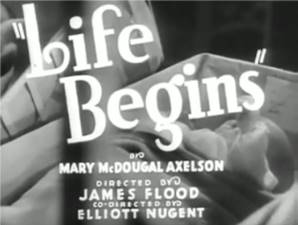
Warner Brothers introduced Loretta Young, Eric Linden, Aline MacMahon, Glenda Farrell, and many others to their new film production. It was released to theaters on September 10, 1932.
Warner Brothers, in a sense, used the production to rebirth their business. “Warners’ indicated the special expectations pinned on the film: ‘Make Life Begins the beginning of a new life in our business…we are doing a sincere job in trying to make the kind of entertainment that will make the country happier.’”
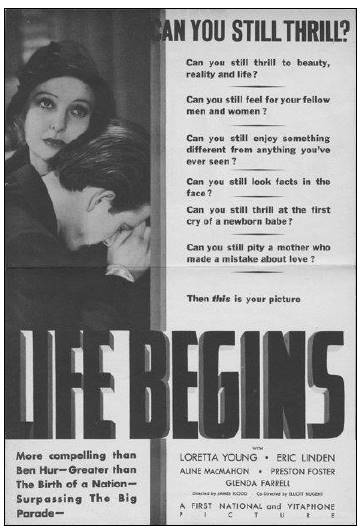
The adaptation swept the nation. “Held in over in movie houses throughout the nation, Life Begins became one of the major film successes of the era.” As it continued to grow in popularity in the United States, it, too, had some setbacks elsewhere. “It was banned in the United Kingdom until 1935” for its realistic portrayal of birth and motherhood.
Due to the setback, Mary and Ivar moved between New York and Los Angeles and back again. Mary continued to write, for screenplays, poetry, and articles. Warner Brothers reached out less than a decade later to relaunch Mary’s hit. “Warners’ was scheduling to re-make Life Begins with a new title: A Child is Born.”



It was released nearly exactly seven years later, January 1940. “This drama of woman’s great adventure boasts such screen players as Geraldine Fitzegerald, Jeffry Lynn, Gladys George,” and many others.
However, in less than ten years, the national perspective shifted. “There was less tolerance of ‘risque’ or ‘sacred’ (as in maternity) subjects in 1939 than in 1932.” The Motion Picture Code began in 1934 which added restrictions to those viewing pictures to a certain age. “In some communities audiences were segregated,” for men to view films at night, and women to view films at matinee.
“The film had an especially hard time in Mary’s home state of Oklahoma. Report Malvina Stephenson, of Sapulpa, sent a Central Press Association release to over five-hundred newspapers charging, ‘Best Sellers Arouse Oklahomans…two current best sellers are smearing Oklahoma – John Steinbeck’s Grapes of Wrath and Mary McDougal Axelson’s A Child is Born.’”
On the other hand, Tulsans reported “‘Women Leaders See Preview – a handpicked group of Tulsans, civic and social organizations, parent teacher associations, will view the film to see if the neurotic character of women Mary McDougal Axelson is portrayed.’ Apparently, it was not, since the women liked and approved the film for general viewing.”
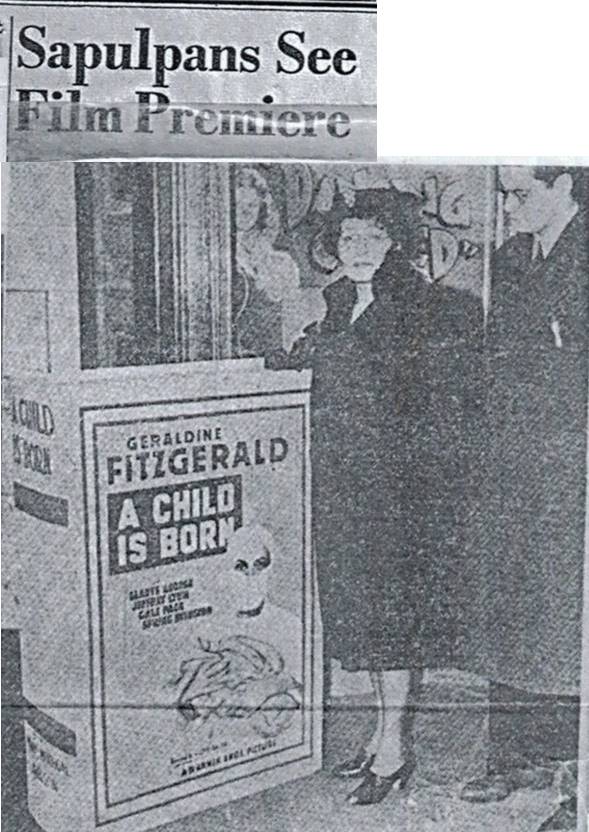
In Sapulpa for the premiere, the Yale Theater “was filled with Sapulpans, most of them women. They applauded as Mrs. Axelson’s name flashed from the projection room and after the showing, they crowded around the author’s sister and nephew,” Mrs. Jennie Myrtle MacKay and Archie MacKay.
Mary’s novel “billed as a ‘woman’s story’ was a commercial success, even though the critics were enthusiastic.”
Mary Carmack McDougal Axelson was a woman, a writer, a wife, a columnist, a mother, a feminist, and nurse. She was given the nickname “Oklahoma Mary” for her dedication and her outstanding career. She kept Sapulpa in her mind and heart. In her own words, she signed her book about her father: “For the Sapulpa Historical Society, this book about a family who cherished Sapulpa, from a daughter of Sapulpa, Mary McDougal Axelson.”
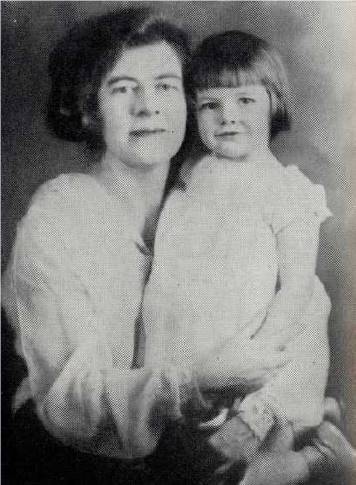
One of Mary’s dreams was to be a writer. She also kept her dream of being a mother. “The irony of Mary McDougal Axelson’s life is that the inspiration behind the creation of her career work – the play, the movies, the book – the birth of her daughter, Mary Ivonne Axelson, would ultimately become the reason for her death.”
“Oklahoma Mary” Part Two will conclude in November.
(Wandering Fires by Mary and Violet McDougal; Lonesome Angel and Other Poems by Mary McDougal Axelson; Last Dream and Other Poems by Mary McDougal Axelson; Thirteenth Child: the story of D.A. McDougal by Mary Carmack McDougal Axelson; A Child is Born by Mary McDougal Axelson; Life Begins by Mary McDougal Axelson)
(Yellow Brick Studio; IMDb; Playbill; Chronicles of Oklahoma, Vol. 60, No. 3, 1982; Sapulpa Herald, August 14, 1915, March 11, 1918, July 2, 1921, July 10, 1923; Creek County Republican, July 5, 1918; Tulsa World, January 25, 1940)









